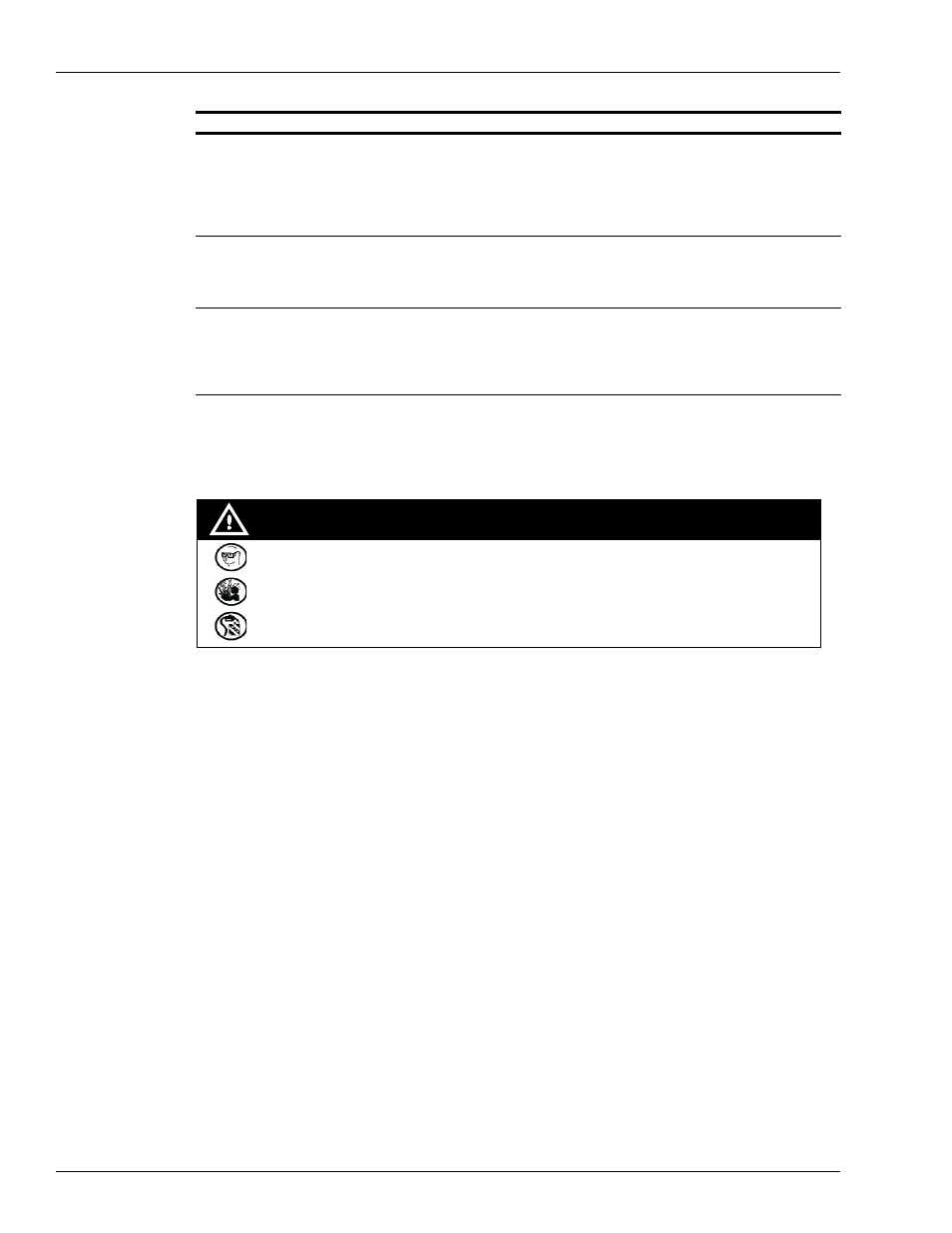Meter calibration, About calibrating meters, Meter calibration -22 – Gasboy Atlas Start-up User Manual
Page 142: About calibrating meters -22, Warning

Page 6-22
MDE-4334D Atlas™ Start-up and Service Manual · July 2013
Hydraulic/Mechanical Components
Meter Calibration
Meter Calibration
WARNING
• Wear eye protection.
• Fire and explosion could result in severe injury or death.
• Remove the parts slowly. Collect fuel in approved containers.
About Calibrating Meters
All meters, even factory calibrated meters, must be checked for accuracy.
Your W&M Agency requires accurate meter calibration. Calibrate every meter under actual
service and installation conditions, as per the Application Programming Interface (API)
Manual of Petroleum Measurement Standards. Check Prover Cans periodically for accuracy.
• Before calibration, properly purge air from the system if the unit is new or has just
undergone hydraulic service. Air in the system affects calibration accuracy. Refer to
on
. After completing calibration, obtain the local
W&M seal.
All replacement meters must be calibrated after installation and testing.
• Use a 5-gallon prover for flow rates under 20 gpm (75 lpm). If you use larger than
5-gallon Prover Cans, the calibrating adjustment changes.
• For delivery rates over 20 gpm (75 lpm), use a Prover Can equal to or larger than the
system flow (flow produced in one minute with the nozzle wide open).
Notes: 1) Calibrating with a small Prover Can causes inaccurate test results. Never use an
under-sized Prover Can for calibration purposes.
2) When calibrating Atlas DEF dispenser, a special Prover Can must be used when
dispensing the Urea product.
The open nozzle vacuum reads low
and pressure reads low; closed nozzle
vacuum reads low and closed nozzle
pressure reads normal.
• Belt slipping
• Pump operating below specified RPM rate
• Pumping unit parts worn out
• Sump float valve malfunctioning
• Leak in supply line between tank and pump or at union
• Relief valve stuck open
Surging or hesitation occurs.
• Supply line check valve defective
• Leak in supply line that traps air
• High spots in supply line
• Bad solenoid valve (uncommon symptom)
Motor stalls or burns out.
• Relief valve sticking
• Motor defective
• Low voltage or defective wiring
• Debris in pump
• Broken pump elements
Low Flow Rate Symptom
Probable Causes
